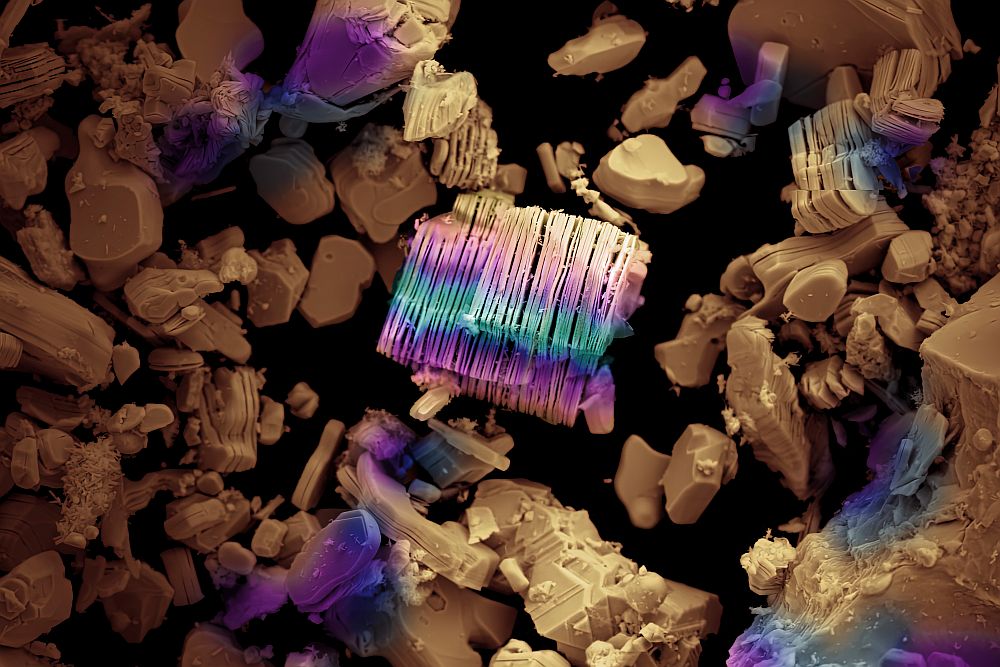On the anniversary of the the eruption of the Eyjafjallajökull volcano in Iceland, it is interesting to report that a group of researchers at Ohio State University, led by ACerS member Nitin Padture, say that two types of specially engineered ceramic coatings for turbine engines can withstand, within limits, some of the highly damaging spalling effects volcanic ash can have on hot jet engines.
The background to this is that the volcano created major environmental and economic disruptions. Air flight in general, particularly commercial flights, was particularly hard hit as the plume of volcanic ash spread eastward toward Europe and then nearly as far south as the Iberian Peninsula before it started swirling back to the west, creating a widespread three-dimensional smear of ash clouds across many of the most active routes used by airlines and military aircraft.
Although at one point NBC was reporting that the airlines might be losing $200 million daily due to the disruptions in the European airspace, the New York Times reported that the EU’s estimates of the total economic loss was closer to $1-$2 billion. That is still a large number and probably does not include the costs of disruptions to various governmental/military activities.
Padture says that while a great deal of research has been done and knowledge gained about the effects of sand on turbine surfaces, the same hasn’t been true for effects of ash. Although both contain large amounts of silica and can be damaging, the two can act very differently. Also, while atmospheric sand is more pervasive, it is usually found in lower concentrations than volcanic ash (in terms of milligrams per cubic meter).
One problem is that the science of measuring the amounts of ash in the air is inexact, leading atmospheric researchers to lean heavily towards warnings issuing cautions when confronted with uncertainties in their data. Better safe than sorry, etc.
The desire to avoid the ash is understandable. Ceramic engineers have developed thermal barrier coatings that are designed to protect the metallic turbine blades and interior surfaces from temperatures that can reach 1200°C. But ash can melt at these temperatures (the group says the Eyjafjallajökull ash melted around 1160°C), and if ingested can turn molten, adhere to the TBC. Commonly, a yttrium-stabilized zirconia composition is used as a TBC, but the YSZ isn’t tough enough to stand up to the ash.
In a paper published in Advanced Materials (doi:10.1002/adma.201004783), the group warns, “This can result in a buildup of a molten-glass deposit that penetrates into the TBCs causing them to spall-off, exposing the bare metal to dangerously hot gases. In extreme cases where the ash concentration is very high, catastrophic engine failure can occur.…Thus, there is a growing need to build protective measures within modern jet engines against damage from a broad range of undesirable silicate deposits.”
The OSU researchers looked at the strain tolerance of two particular ceramic coatings (applied via air plasma spray) to test their resistance to ash. One is a gadolinium zirconate-based coating (Gd2Zr2O7), which Padture says is already commercialized and being used in some Pratt & Whitney engines. The other is a new zirconia–alumina coating developed by Padture.
In brief, the group prepared coated-metal samples of each and then used furnace to see how they withstood exposure to ash samples for 24 hours at 1200°C in an air atmosphere. They then used electron microscopy to study cross sections of the materials.
With the Gd2Zr2O7 TBC, the group found by looking at the EM images that the molten ash reacts with the coating to form a stable, apatite-type solid that prevents all but the initial penetration of the ash, and thus provides a margin of safety.
Padture’s new composition showed similar positive results. His coating — YSZ additionally containing Al2O3 and TiO2 — reacts with the ash to from a layer of anorthite, which is also impervious and prevents further penetration of the molten ash.
One of the researchers, doctoral student Andy Gledhill, explains in a news release that stopping the penetration of the molten ash is all about keeping the majority of the pores in the TBC open. “The chemical reaction arrests the penetration of the ash into the coatings,” Gledhill says. “The unaffected pores allow the coating to expand and contract” and adjust to temperature changes.
The paper’s first author, Julie Drexler, says that the need for new coatings is in part driven by airborne contaminants, such as ash or sand, but she notes that the larger picture is that turbines — for flight and energy-generation applications — are being pushed to higher operating temperatures. “We can get greater efficiencies at higher temperatures, and at higher temperatures standard TBCs will probably not be sufficient to protect metal components because ash and sand damage will increase,” says Drexler. “And, some of the new energy-related turbines will be exposed to fly ash and may also be less expensive to operate if they can run on less-than-pure syngas.”
The groups says the next step is to test the coatings in a new high-temperature component-testing rig to see how they withstand repeated thermal cycles, letting the material cool between blasts of heat, a pattern that more closely resembles the temperature stresses turbines face in real service.
“This study’s not going to solve all the problems of ash clouds and jet engines, but we are making progress, and we’ve learned a lot about the physics of the situation,” Padture said.
He says that is good to learn that the Gd2Zr2O7 TBC provides significantly more resistance to ash than ordinary YSZ coatings, but notes that they these engines are only used on some aviation routes. And as for his new coating, he notes that the United States military is interested in his work and helping to fund some of the research. This support may ultimately lead to broader commercial use of the YSZ+Al+Ti coating.
CTT Categories
- Basic Science
- Glass
- Material Innovations
- Transportation


